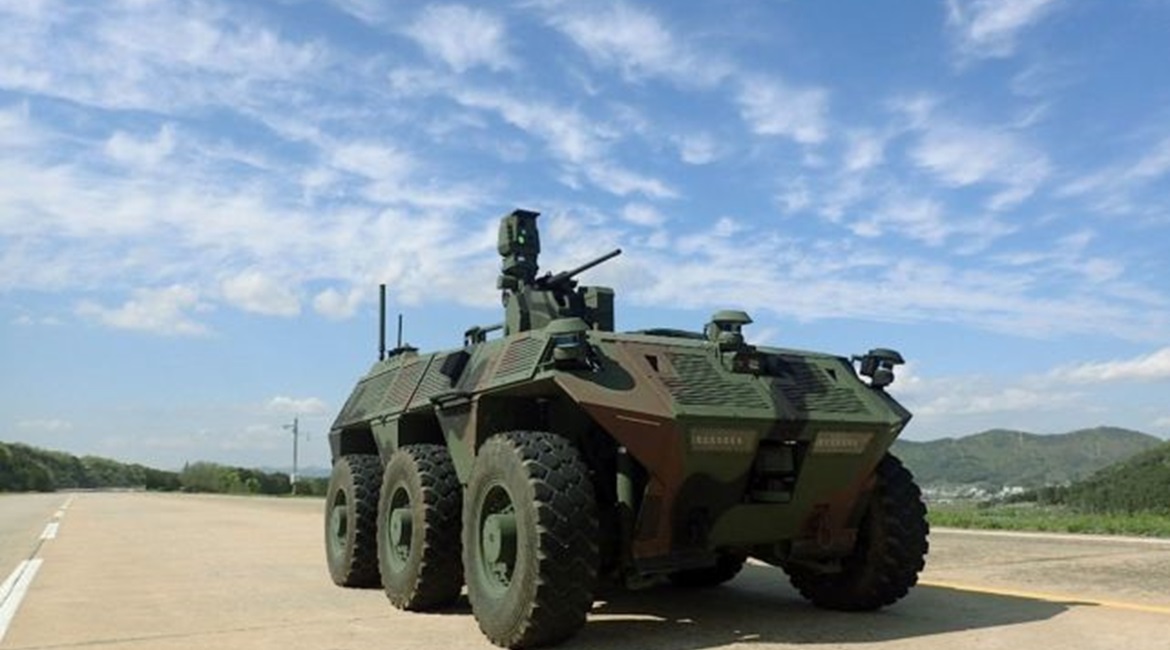
South Korea’s Defense Acquisition Programme Administration (DAPA) announced on 22 April that the exploratory development phase for the 6×6 Unmanned Surveillance Vehicle has been completed, with the agency now set to move on to full-scale development of the strike-capable platform.

DAPA announced on 22 April that the exploratory development phase of the Unmanned Surveillance Vehicle a prototype shown here has been completed, with the agency now set to move on to full-scale development of the strike-capable platform. (Hanwha Defense)
The agency said that the unmanned ground vehicle (UGV); development. which the Agency for Defense Development (ADD) along with several research institutes and defence companies began in October 2018, is primarily meant for use by mechanised infantry divisions and armoured brigades to carry out surveillance, reconnaissance, and patrol missions, particularly in “hazardous areas”.
DAPA said that the exploratory phase was essential to secure key technologies for the UGV, including artificial intelligence-based surveillance equipment and autonomous driving-related technologies.
In a separate statement issued that day, Hanwha Defense, which is taking part in the development and integrating communication and surveillance systems on to the UGV, said the exploratory development also focused on testing and evaluating operational capabilities as well as the readiness of the key technologies.
“During the latest field trials conducted between last December [2020] and February [2021], the unmanned robotics system … met key operational requirements sufficiently to be deployed in the military,” said a company spokesperson, pointing out that in March 2021 the UGV reached ‘technology readiness level (TRL) 6’ in key unmanned technologies, including self-driving, obstacle detection/avoidance, and surveillance. The spokesperson said that TRL 6 is the key condition to go ahead with full-scale systems development.
Looking to read the full article?
Gain unlimited access to Janes news and more...




